Inspired by how muscles flow into one another, this spatula serves as a tooling extension of one's body.
Like the geometry of our body, this tension-form emerged solely from fair curves. The seamless twist follows the planes of the palm-arm bridge, transforming the spatula into a natural extension of the arm, uniting them as one.
Full slide deck here.
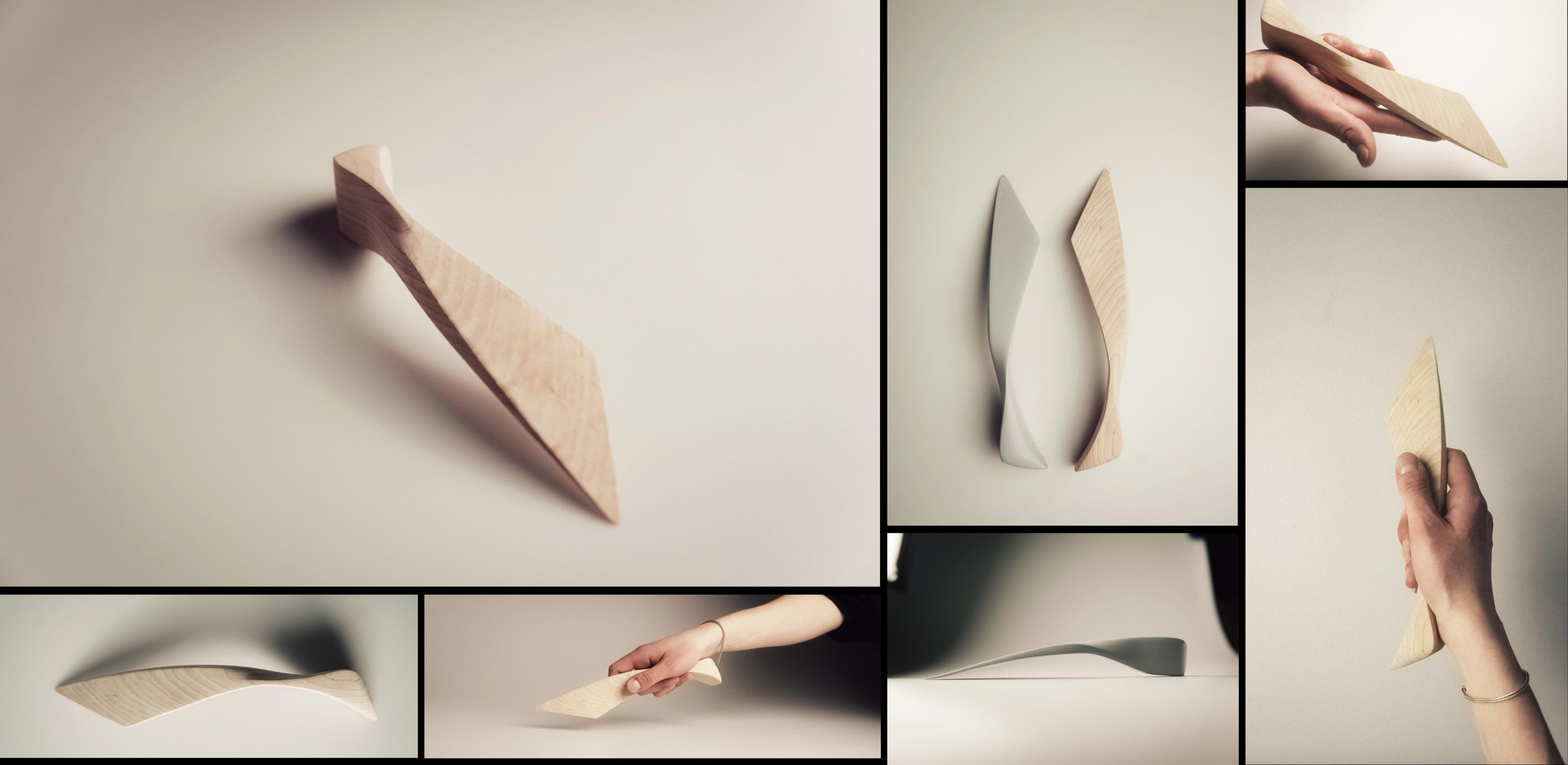
● Intended use case: laterial swiping
● features
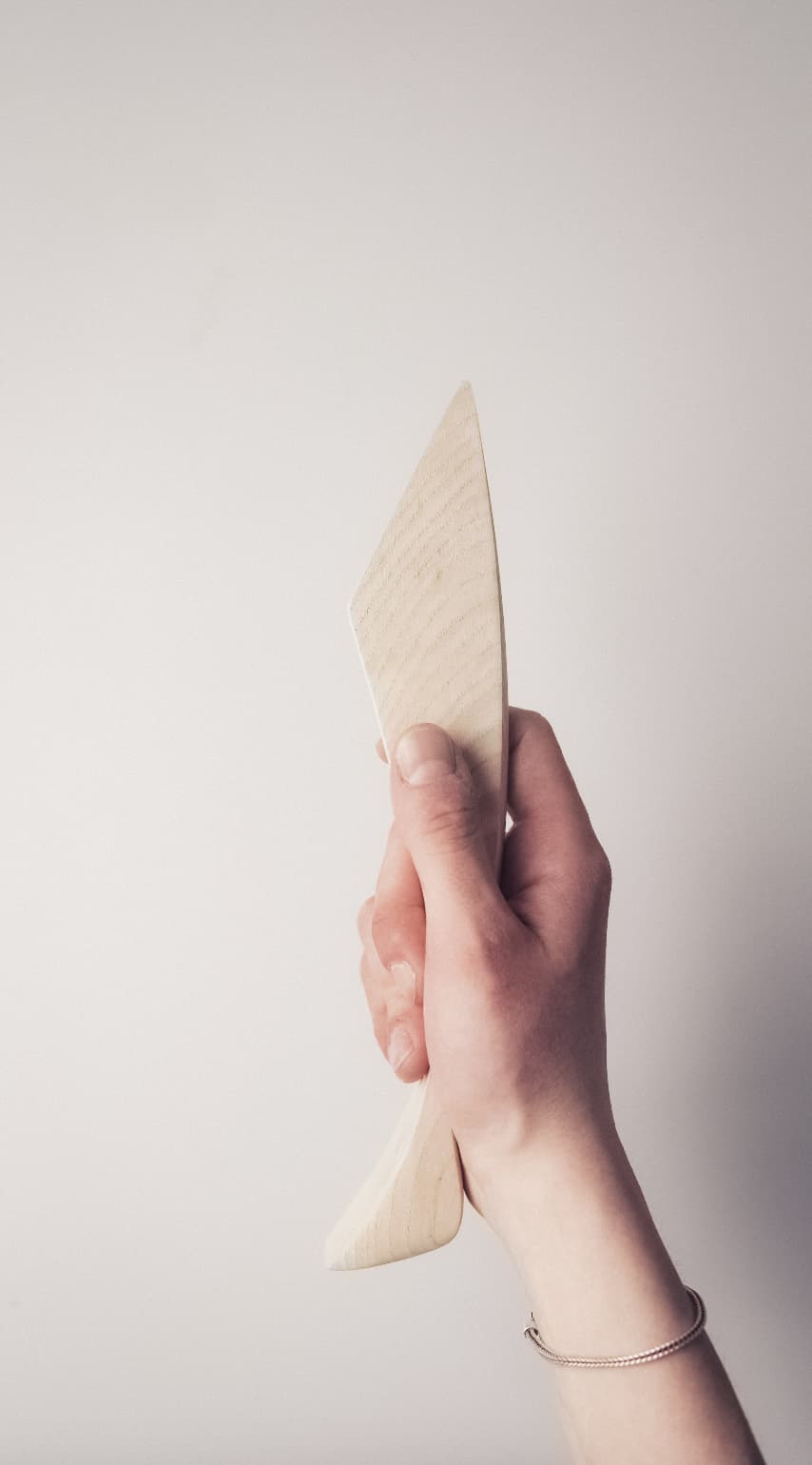
Thumb aligns to working edge
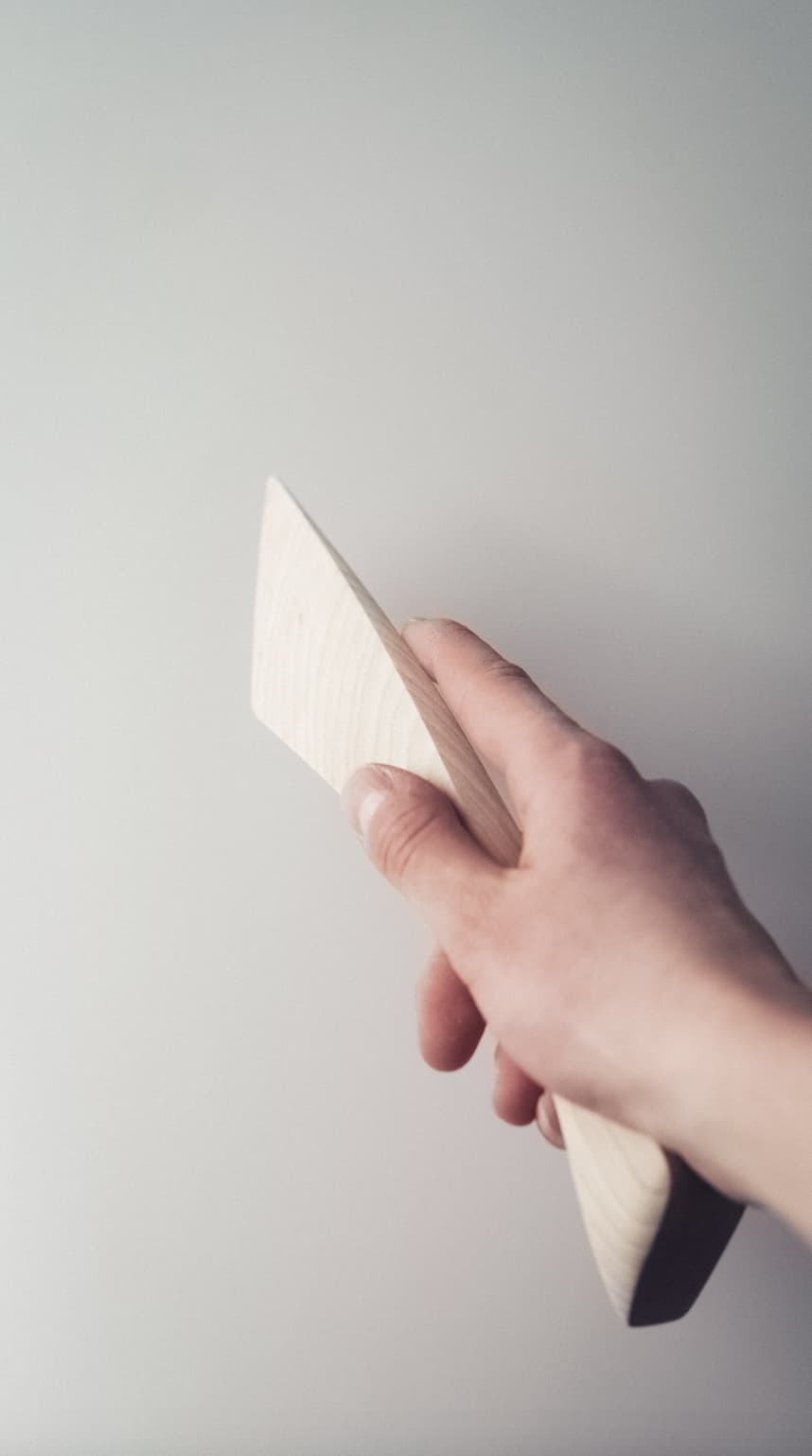
1:1 Relationship

Ample grip area allowance

There is a clear line of action starting at the arm, down to the wrist, thumb, and finally, blade edge.


The twist natrually fits the thenar eminence of the palm perfectly, offering grip support and control.


Focused light informed me what planes needed more or less sanding. It reveals plane elevation.
Process
● Inspiration
Muscles, caustics, and hands.
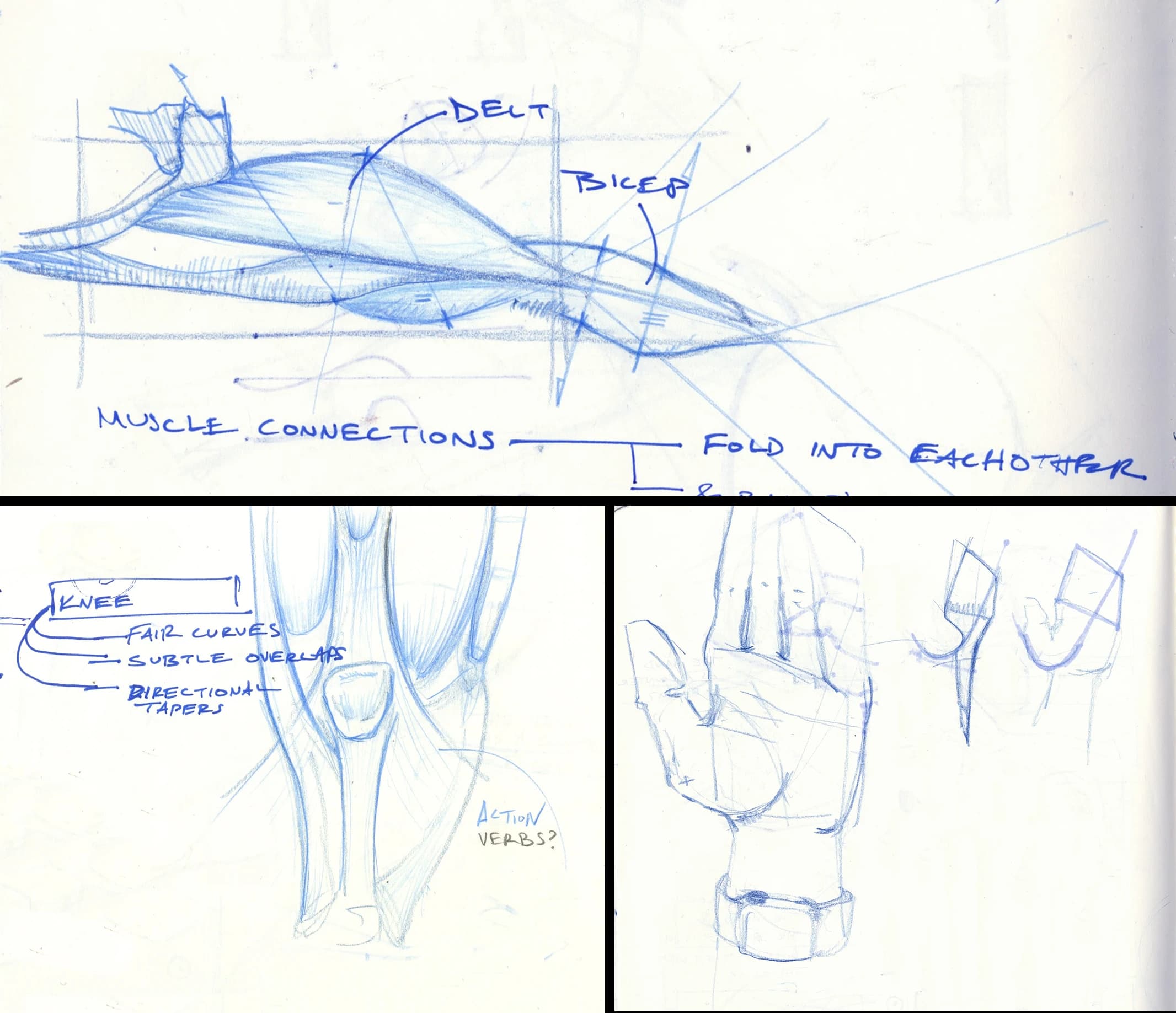
Ergonomics Discoveries: Toothpaste revealing form

● Setting Constraints
When the thumb moves, the food follows.
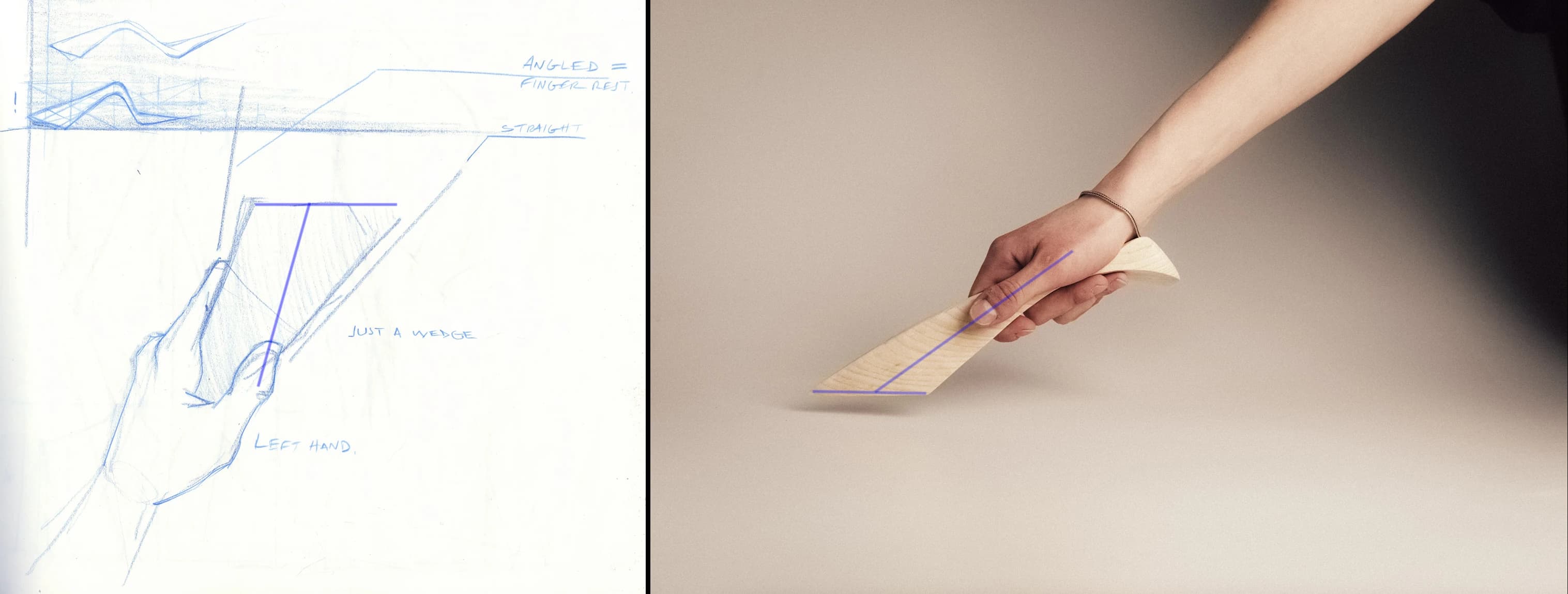
● Prototyping & CAD
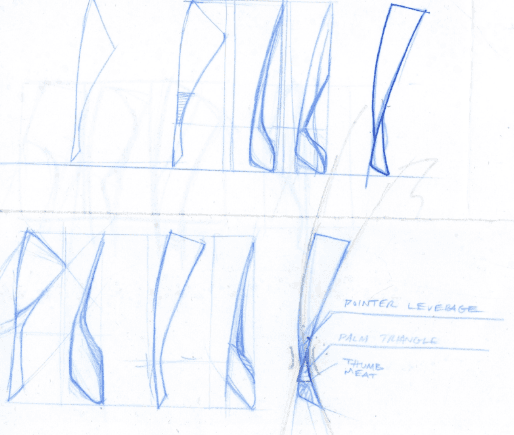
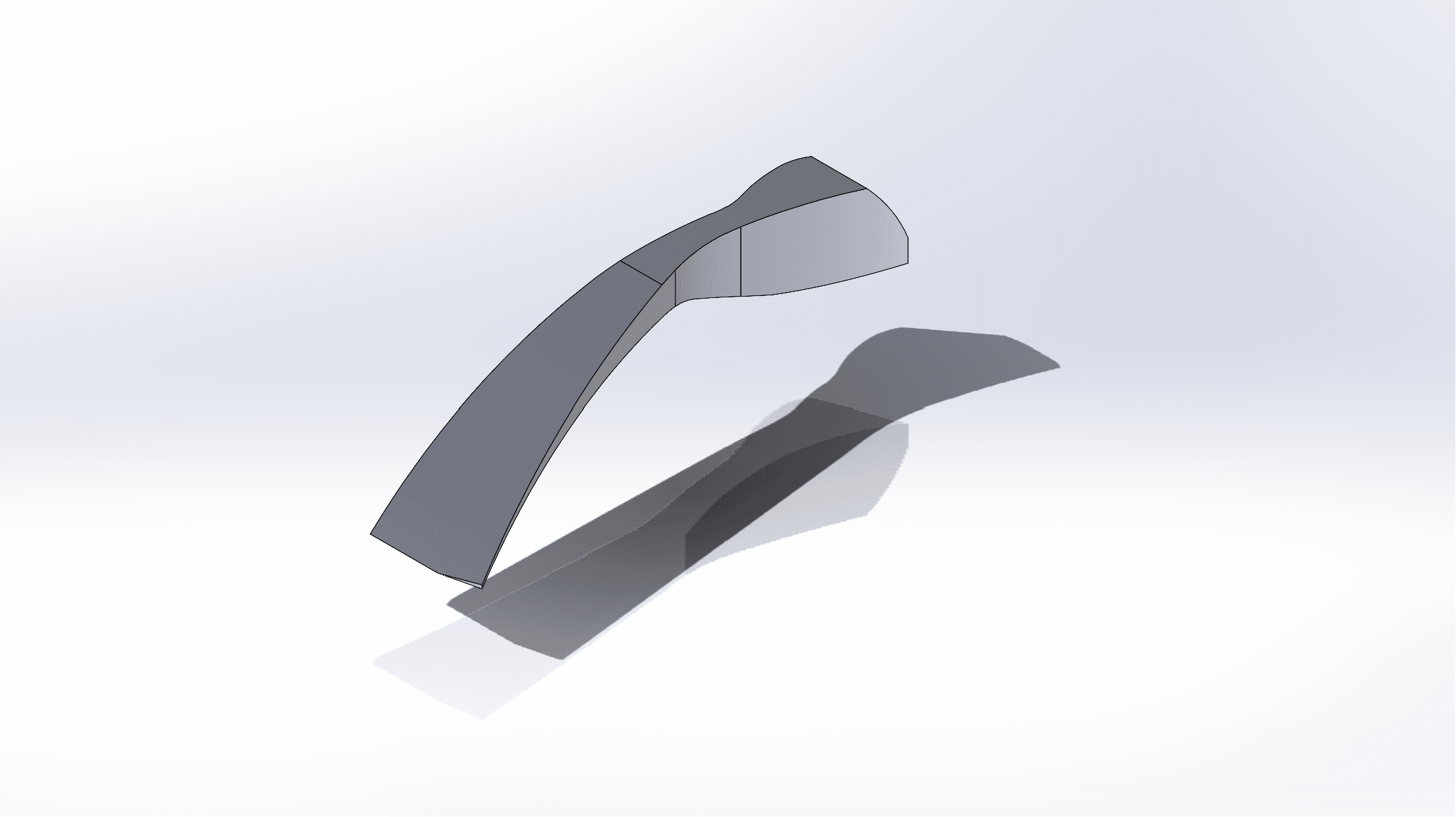
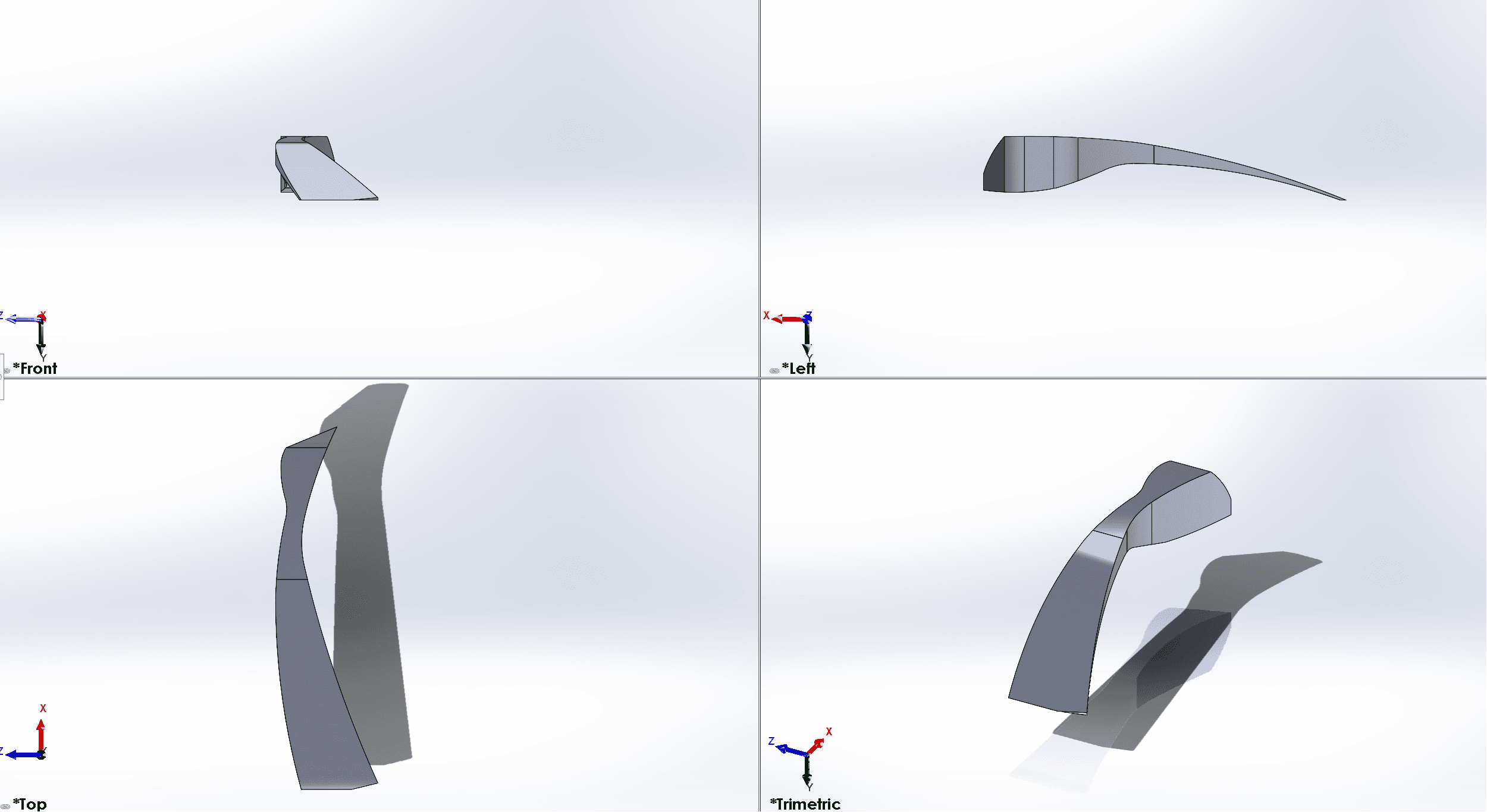
Solidworks helped speed visualizing minor tweaks to my base top and side profiles.
(L) First prototype was too visually heavy, opted for a slimmer, tighter profile
(R) Considering creating a slice so form follows the motions function.
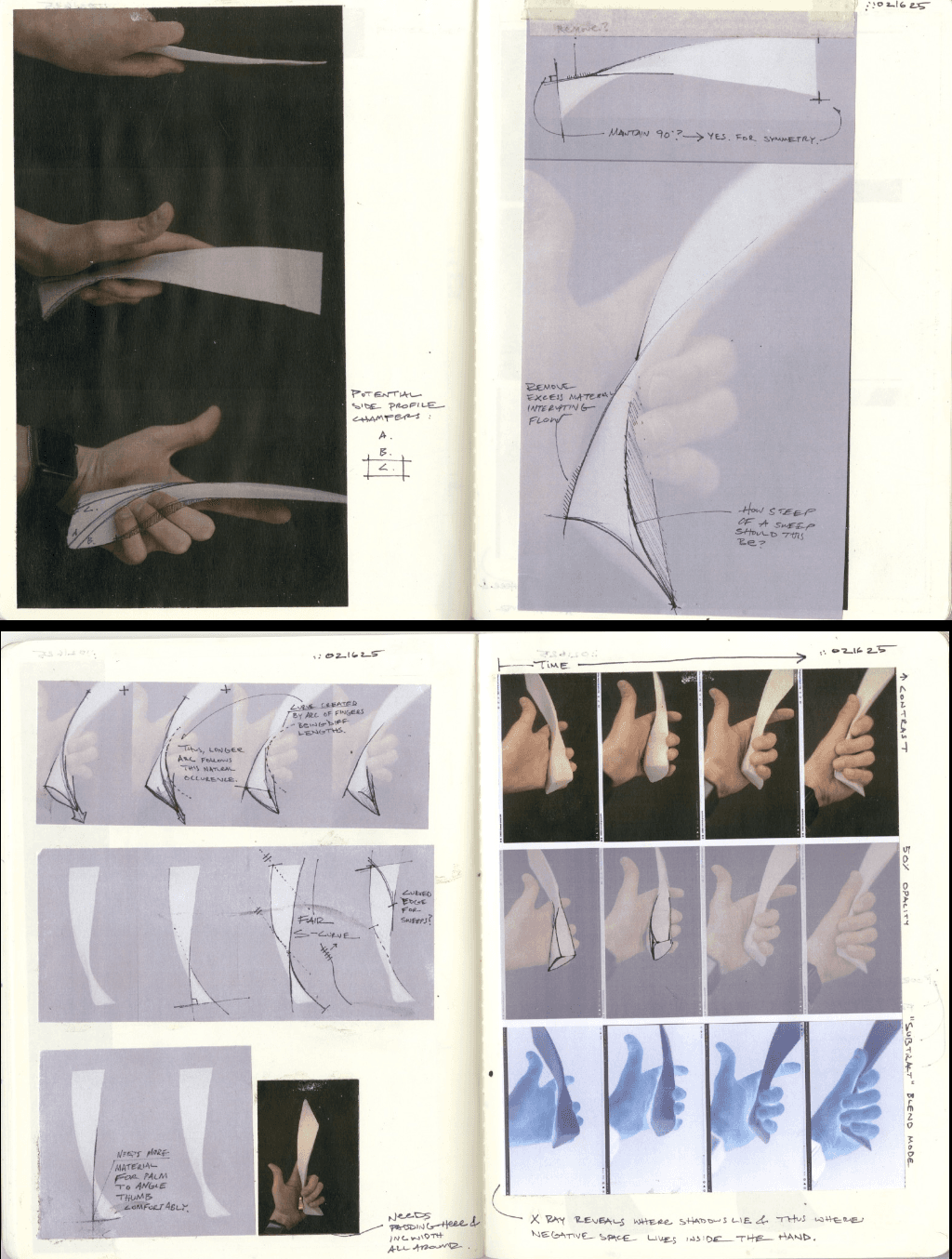


Focused light informed me what planes needed more or less sanding. It reveals plane elevation.